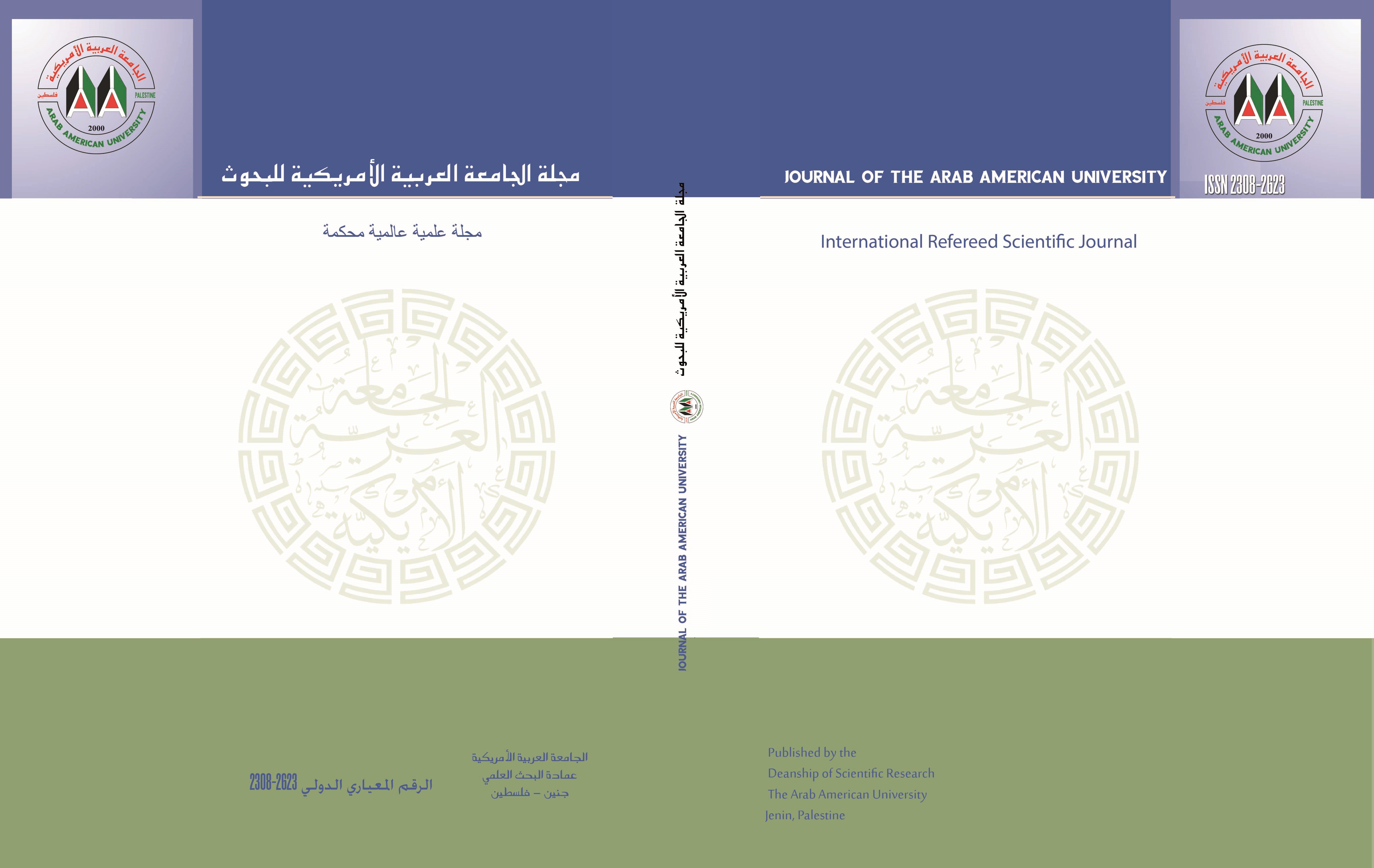Journal of the Arab American University مجلة الجامعة العربية الامريكية للبحوث

Abstract
This study aimed at unveiling the degrees to which the standards of the Universal Design for Learning model (UDL) are fulfilled in the e-learning System at both Al-Aqsa University and Palestine Technical University. The descriptive approach was utilized due to its suitability to the nature of the study, where the researchers used a three-parts questionnaire as a tool: representation with (12) indicators, expression and action with (11) indicators, and engagement and correlation with (17) indicators. The questionnaire was applied to a sample (480) males and females of the two university students. The main findings of the study were as follows:
- The standards of the Universal Design for Learning model (UDL) were achieved in the e-learning system at both Al-Aqsa and Palestine Technical universities with a moderate degree within the whole scale in the three parts.
- There were no statistically significant differences at ( α≤0,05) between the averages of the study sample responses in the degrees to which the standards of the Universal Design for Learning model (UDL) are fulfilled in the e-learning system according to the institution (Al-Aqsa University, Palestine Technical University), gender (male, female), or college (Applied Sciences, Humanities).
- There were statistically significant differences at (α≤0,000) between the averages of the study sample responses in the degrees to which the standards of the Universal Design for Learning model (UDL) are fulfilled in the e-learning system according to the differences in the level of computer knowledge and skills (very high, high, average, and poor) and level of Moodle Training (received training, did not receive training)
- The study recommended that universities should adopt the Universal Design for Learning model (UDL) with training faculty members to use it, in addition to making available the appropriate conditions and developing e-learning environments in line with the needs of both faculty members and students.
Recommended Citation
Mahdi, Hasan and Hijazi, Joltan
(2023)
"The Degrees of Fulfillment of the standards of The Universal Design for Learning Model (UDL) in the e-learning System: A Study on Al-Aqsa University and Palestine Technical University during COVID 19,"
Journal of the Arab American University مجلة الجامعة العربية الامريكية للبحوث: Vol. 9:
Iss.
2, Article 7.
Available at:
https://digitalcommons.aaru.edu.jo/aaup/vol9/iss2/7

